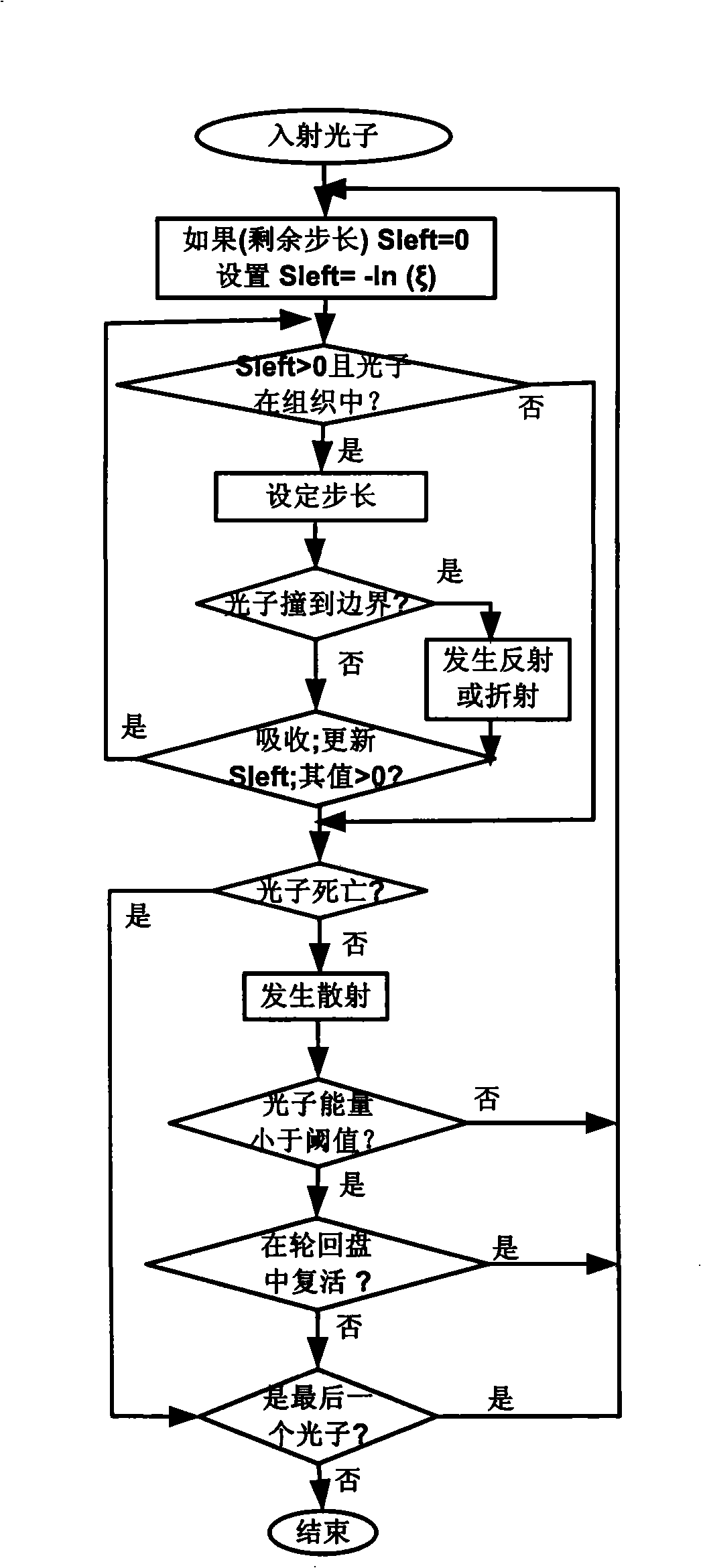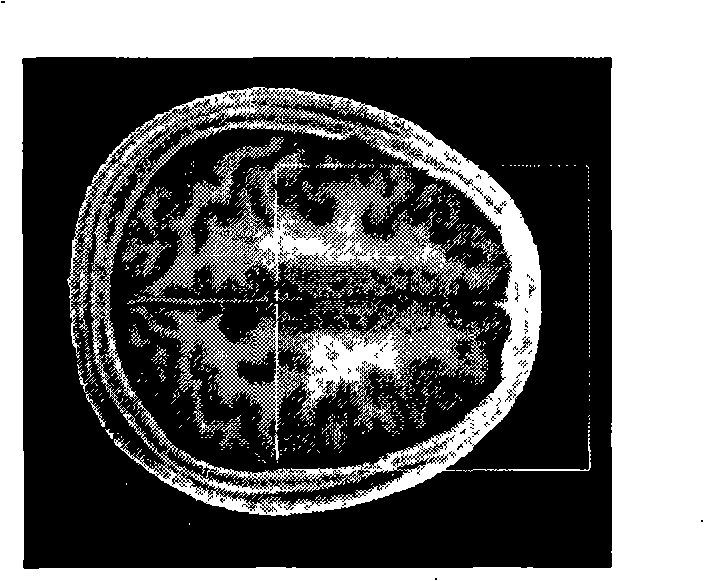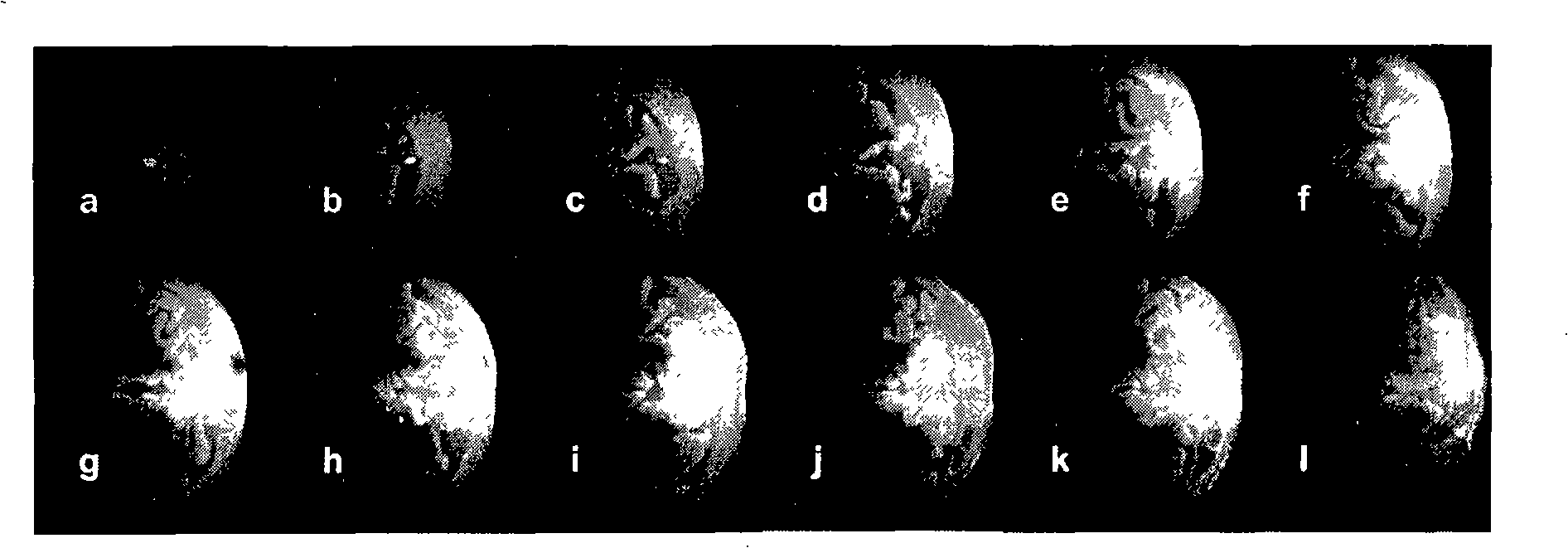Quantitative Monte Carlo simulation method for light transfer characteristic in biological tissue
A technology of biological tissue and simulation method, which is applied in the application field of spectral technology, and can solve the problems of tissue model limitation, low precision, and inability to use biological tissue, etc.
- Summary
- Abstract
- Description
- Claims
- Application Information
AI Technical Summary
Problems solved by technology
Method used
Image
Examples
Embodiment 1
[0075] Take the voxel side length as 0.4mm and the number of photons as 10 7 And the tissue optical parameters in the following table use the method of the present invention to simulate light in such as figure 2 Transmission in the frontal brain of the digital human shown in the cross-sectional view, the resulting luminous flux distribution is as follows image 3 shown. image 3 The subgraph g in corresponds to figure 2 The area inside the white wireframe in . This tissue model cannot be simulated using the existing new method 'tMCimg' because the method cannot be applied to biological tissues with curved surfaces. The luminous flux distribution of any longitudinal section obtained by using the existing widely used 'MCML' method with the same parameters is as follows: Figure 4 shown. image 3 The distribution maps of different cross-sections are different, which is consistent with the three-dimensional tissue structure of brain tissue. Figure 4 The distribution of lu...
Embodiment 2
[0078] The accuracy of the method of the present invention is tested with a columnar multi-layer simplified tissue model, and compared with the results obtained by the existing 'MCML' method with the highest accuracy. The voxel side length is 0.5mm, and the number of photons is 10 5 . The optical parameters are shown in the table below.
[0079]
[0080]
[0081] The following table shows the comparison results of the diffusion coefficient of light transmitted in layered simplified biological tissues obtained by the method of the present invention and the existing method 'MCML' with the highest accuracy, and the new method 'tMCimg' which can be used in three-dimensional structural tissues. Figure 5The upper subgraph is the luminous flux distribution diagram, and the lower subgraph is the curve of light absorption changing with the depth of biological tissue. the table below and Figure 5 All show that the accuracy of the present invention is not lower than the level ...
PUM
 Login to View More
Login to View More Abstract
Description
Claims
Application Information
 Login to View More
Login to View More - R&D
- Intellectual Property
- Life Sciences
- Materials
- Tech Scout
- Unparalleled Data Quality
- Higher Quality Content
- 60% Fewer Hallucinations
Browse by: Latest US Patents, China's latest patents, Technical Efficacy Thesaurus, Application Domain, Technology Topic, Popular Technical Reports.
© 2025 PatSnap. All rights reserved.Legal|Privacy policy|Modern Slavery Act Transparency Statement|Sitemap|About US| Contact US: help@patsnap.com



